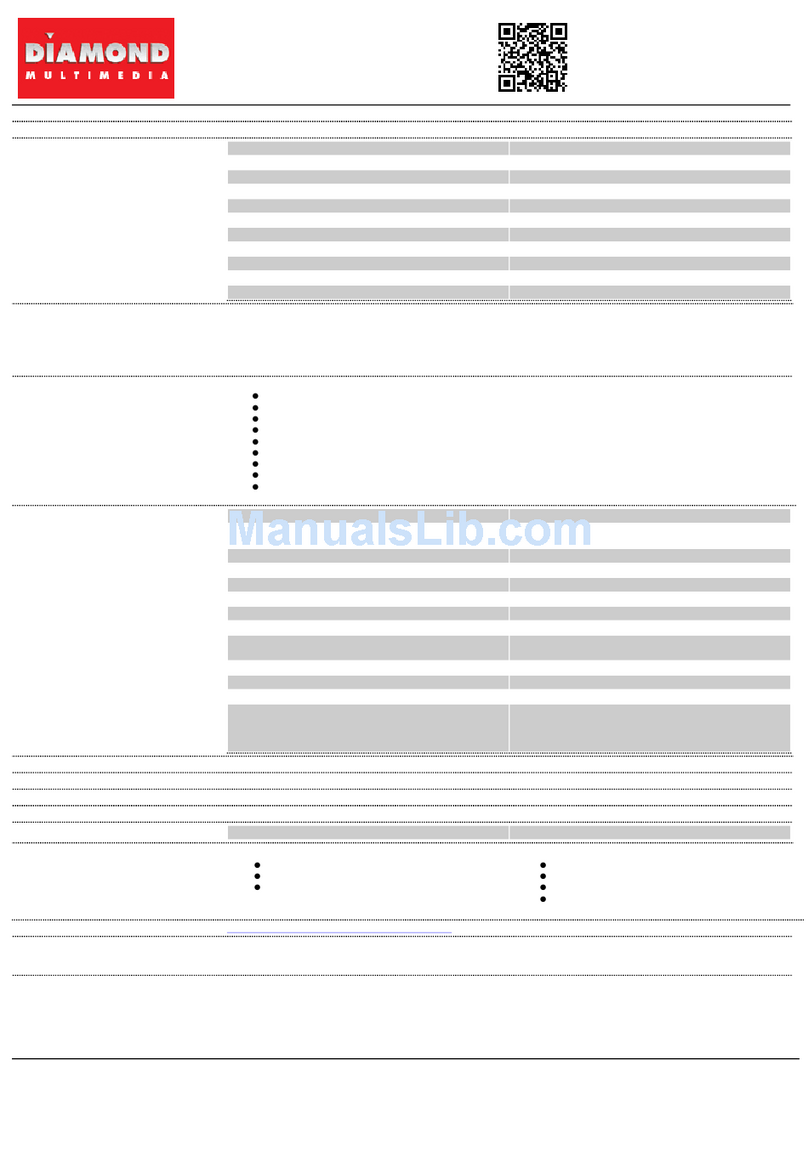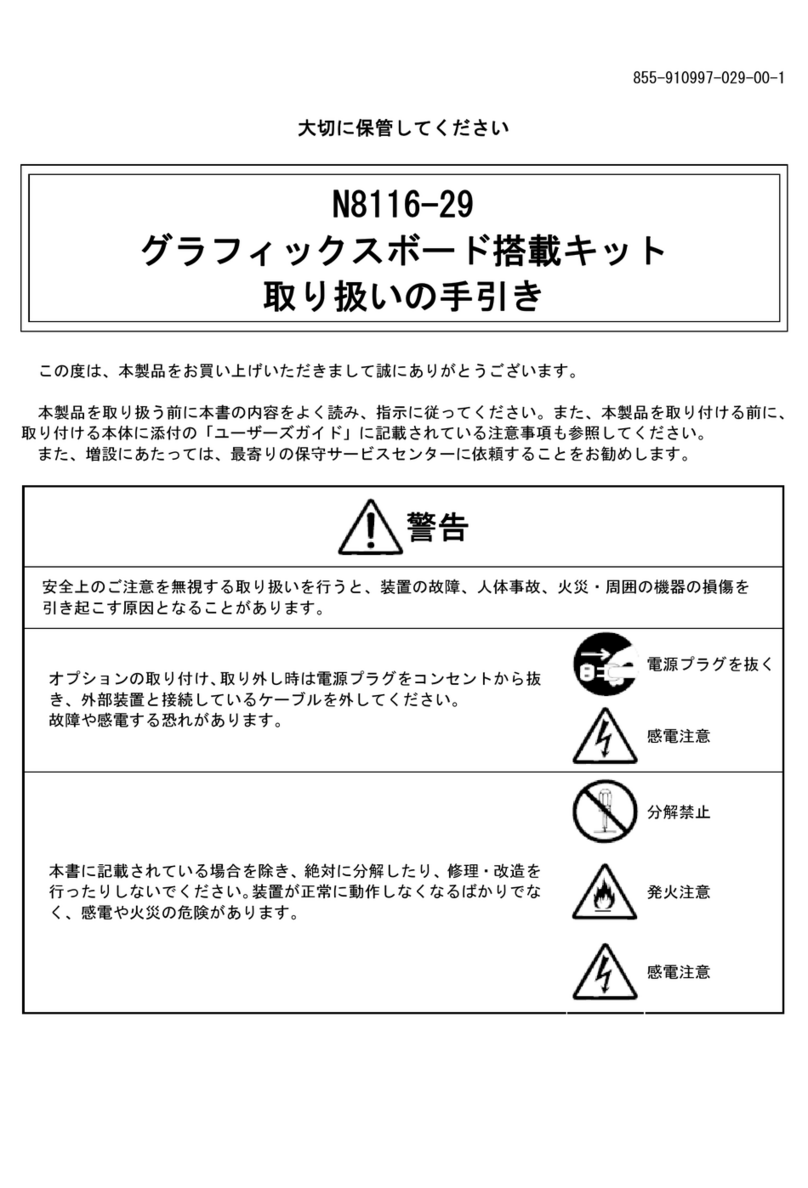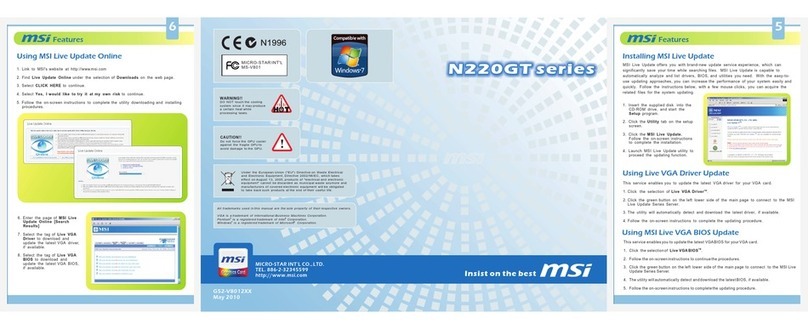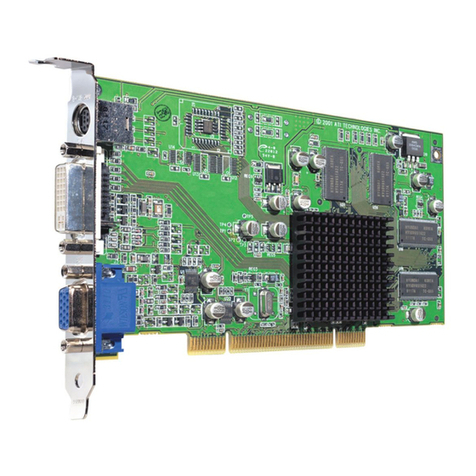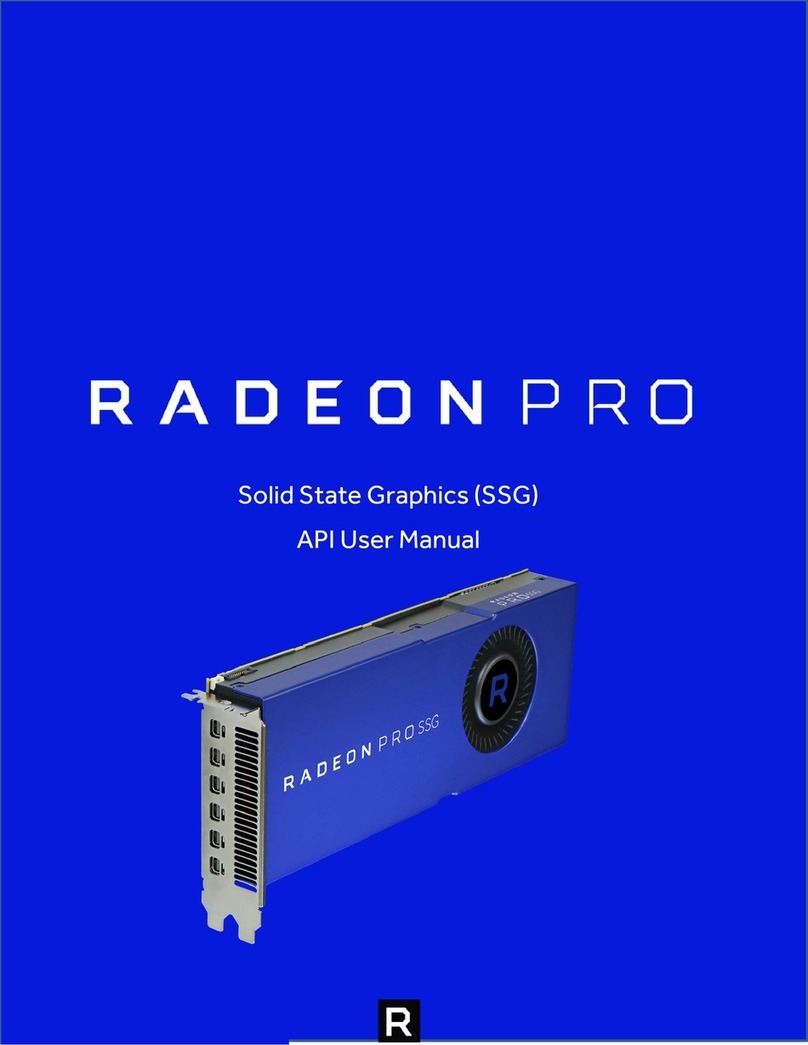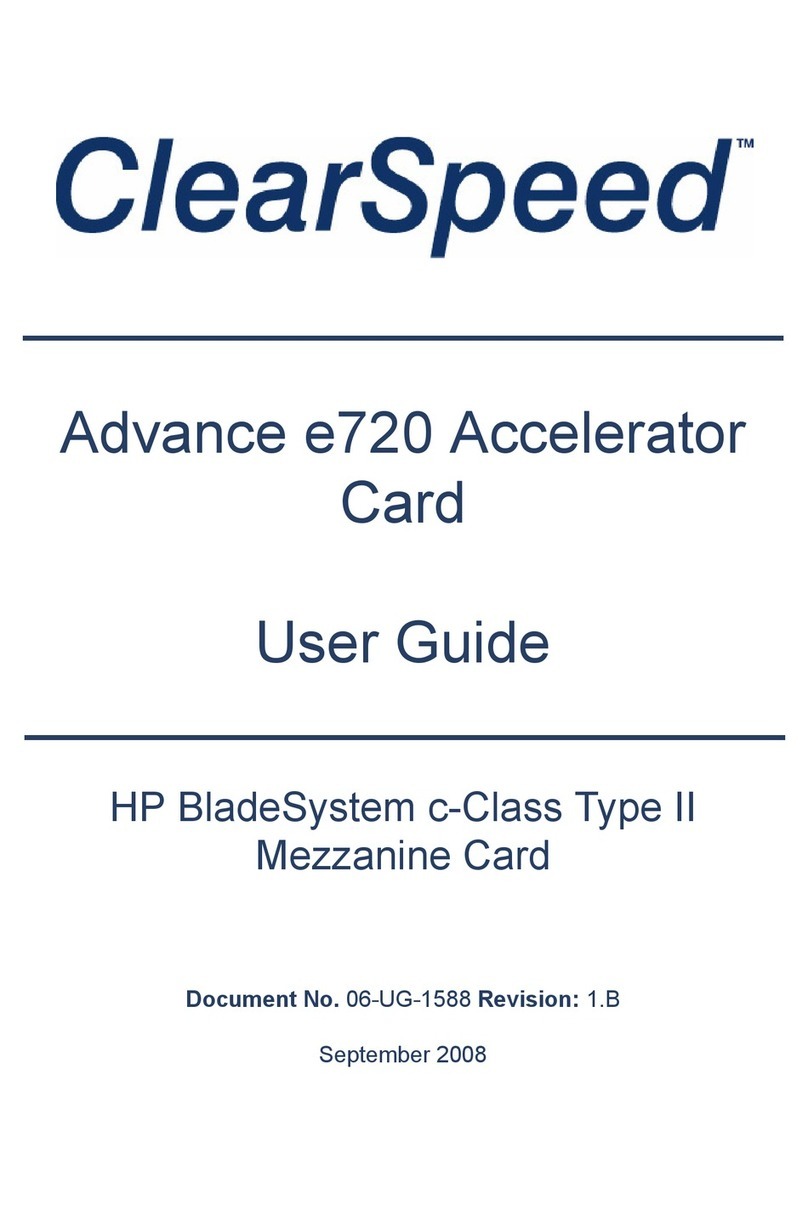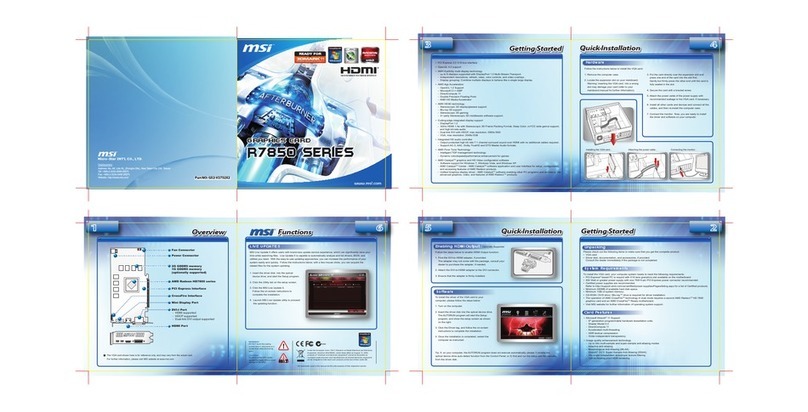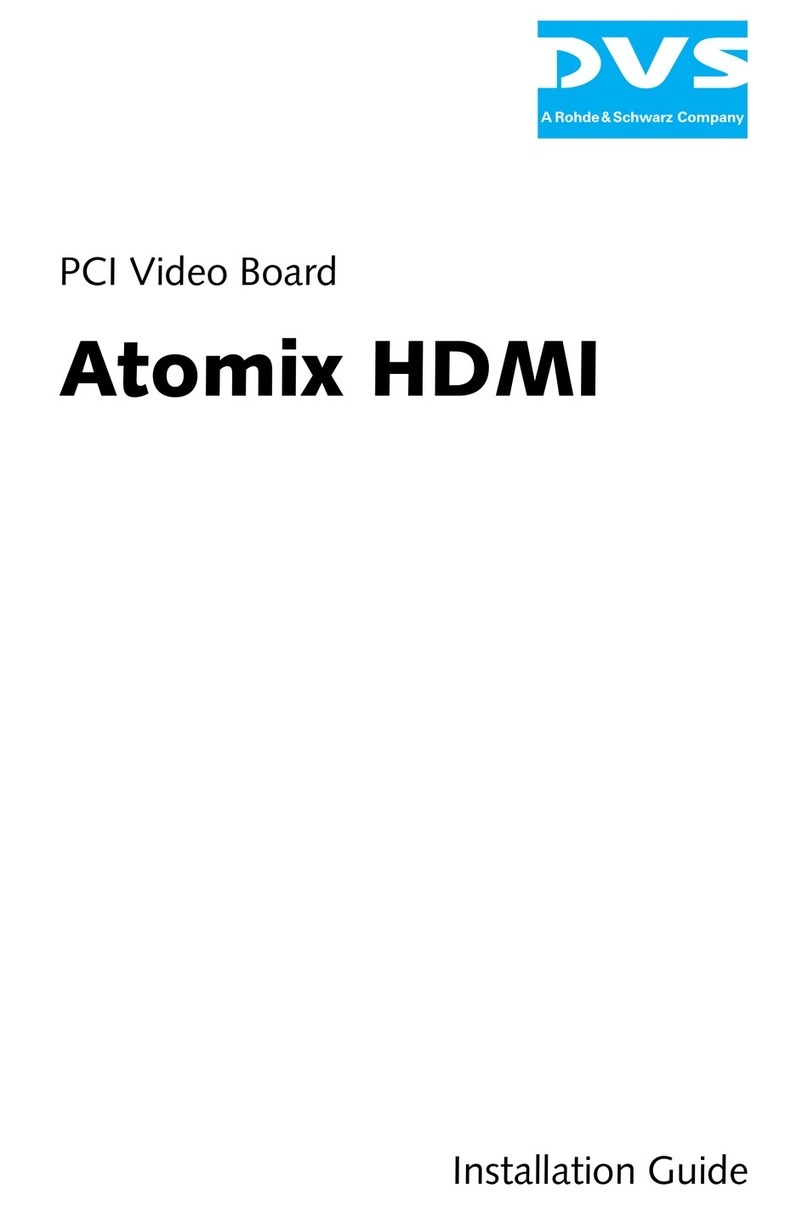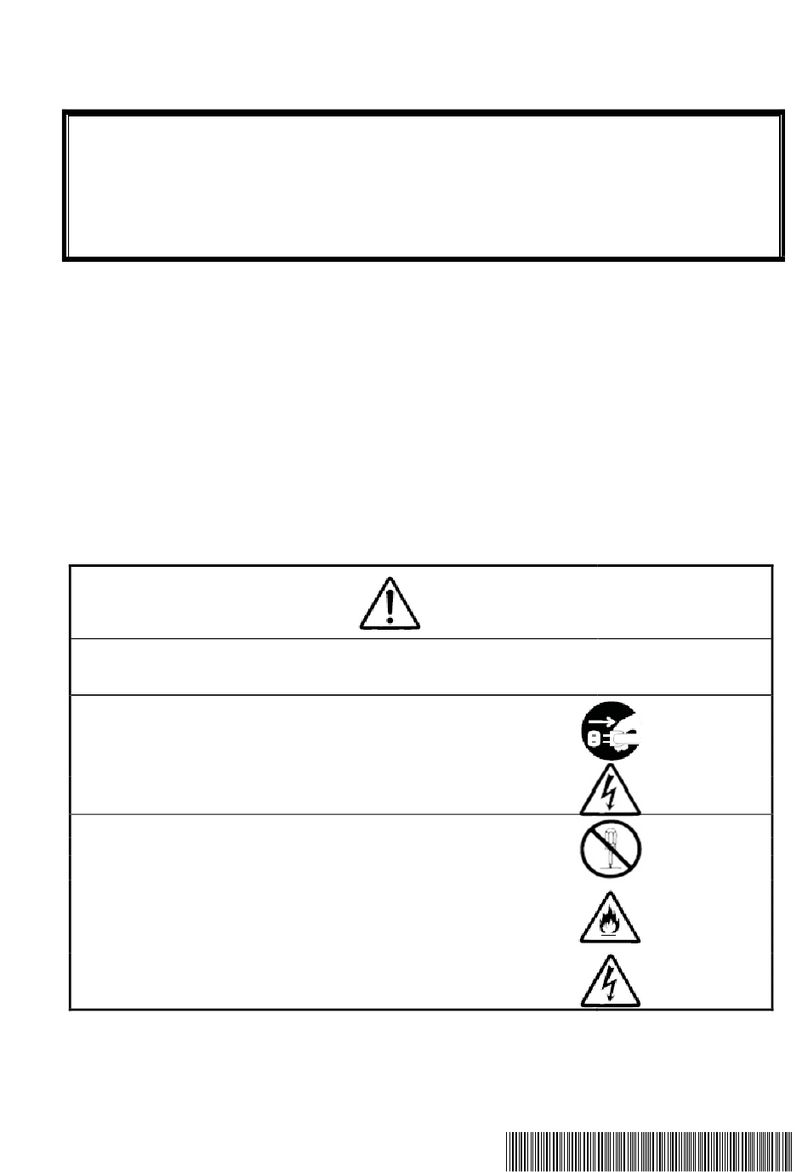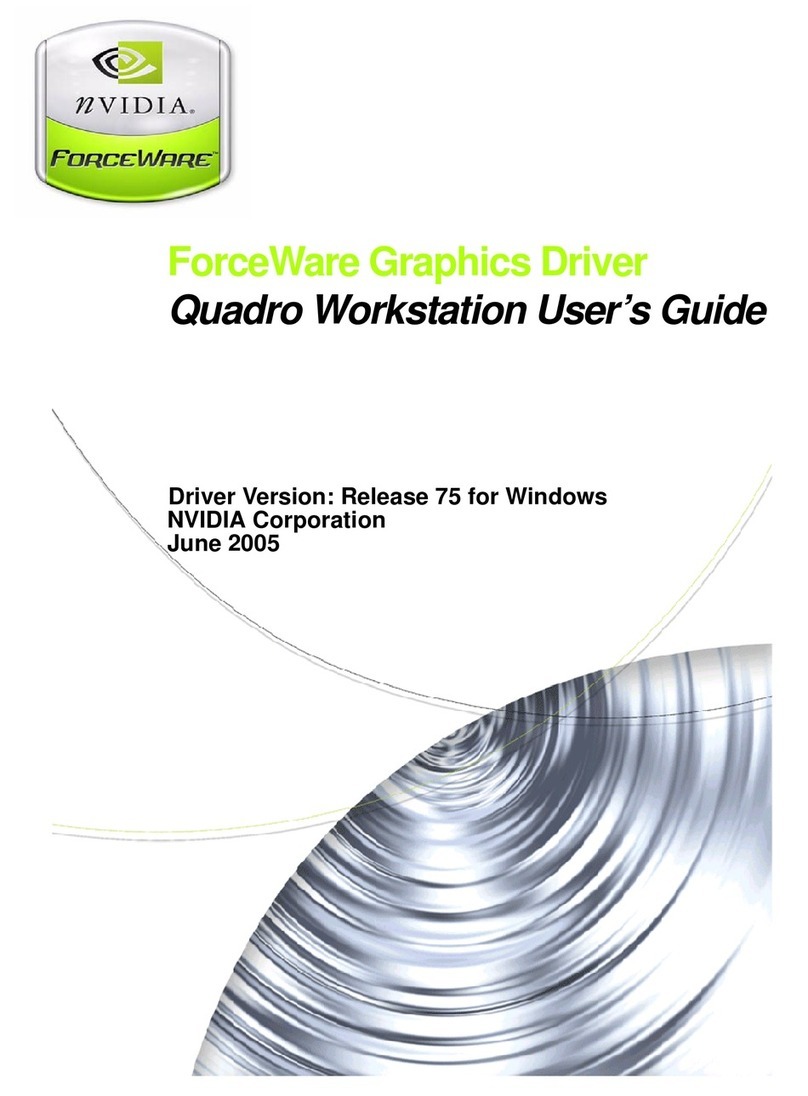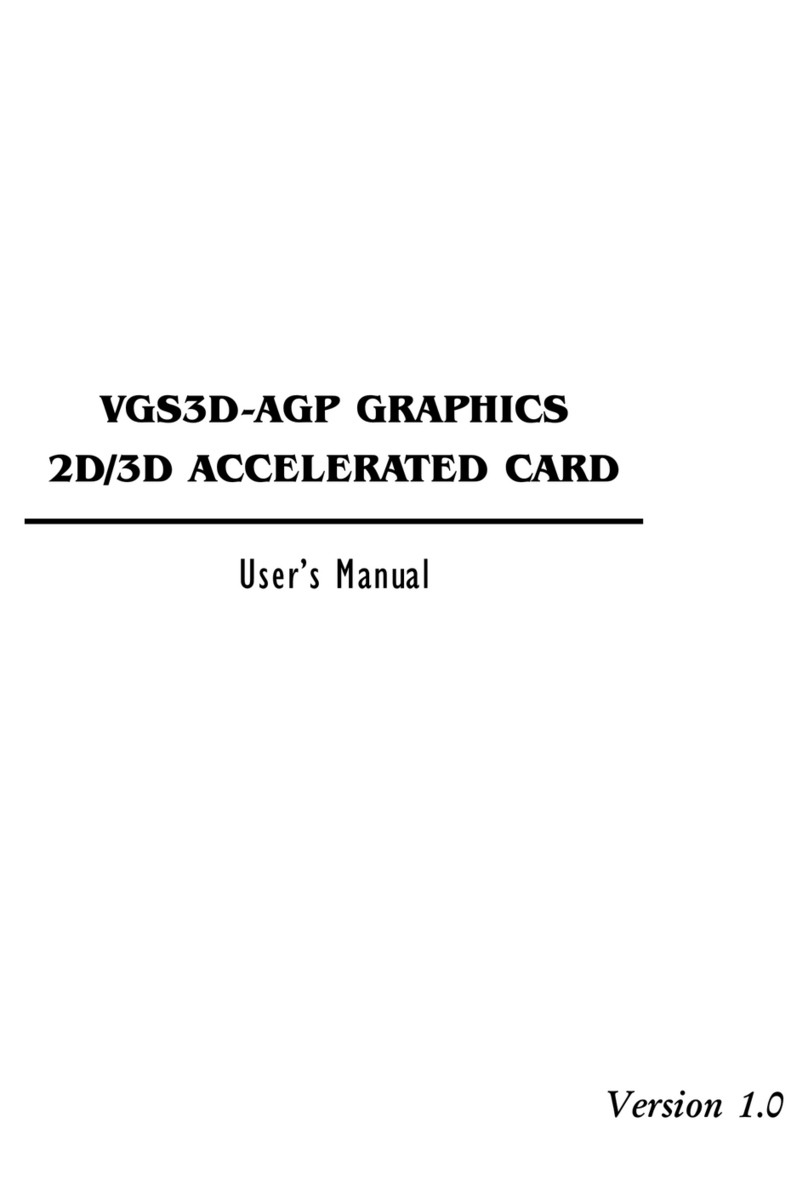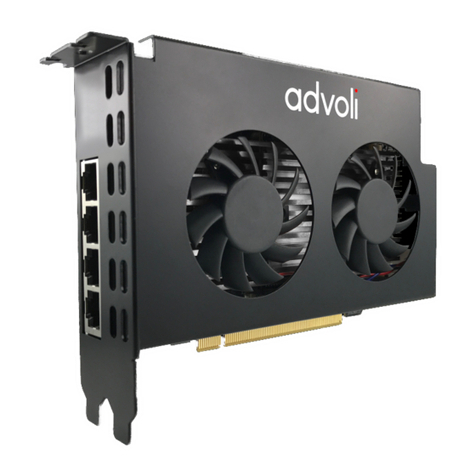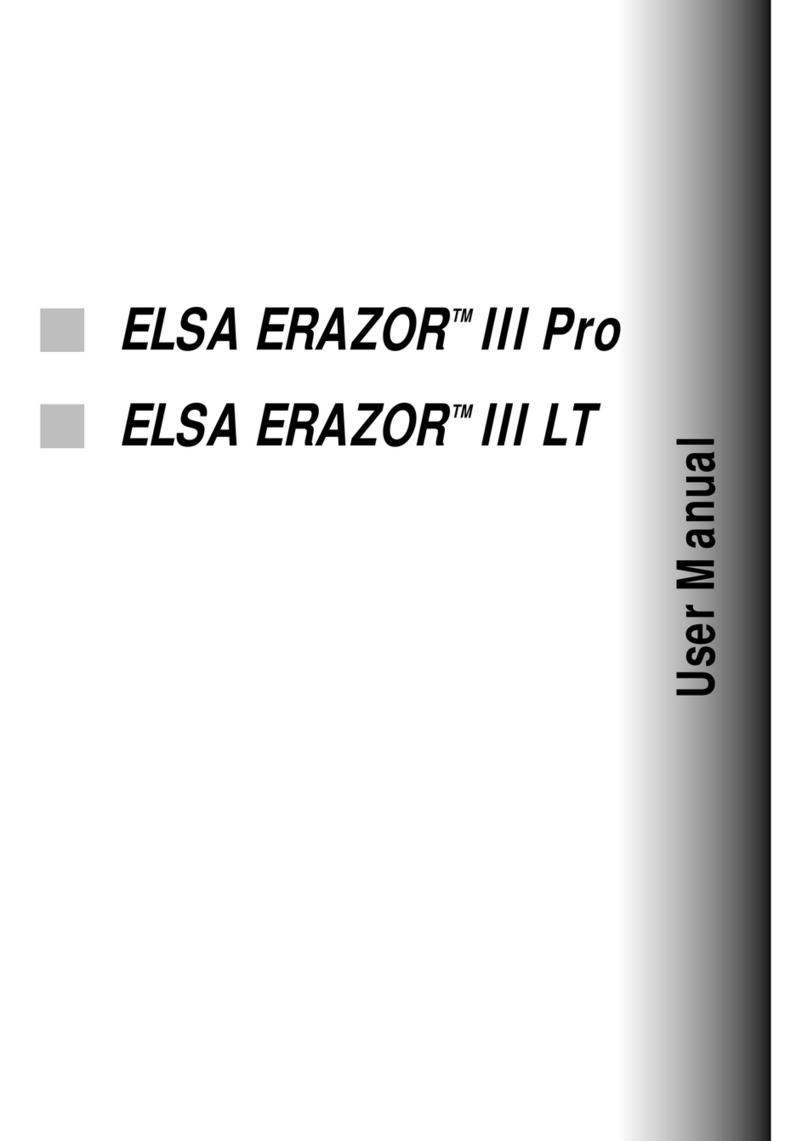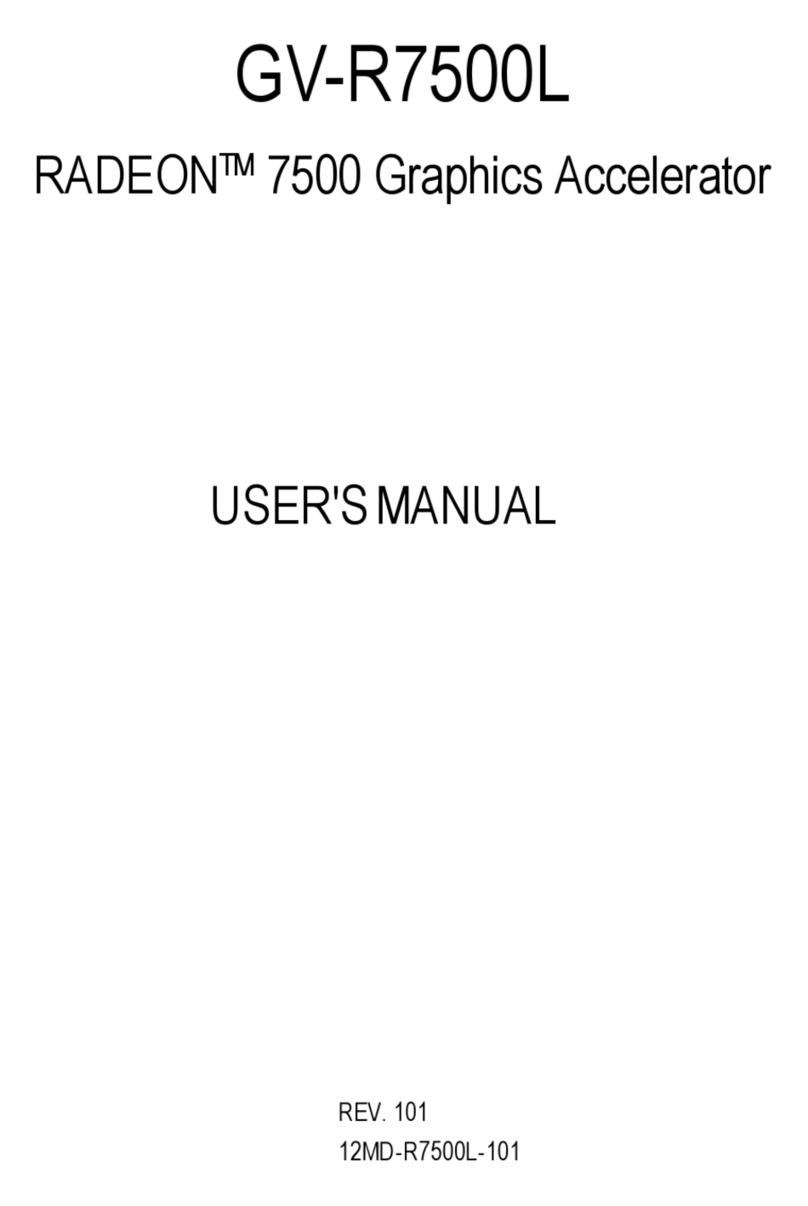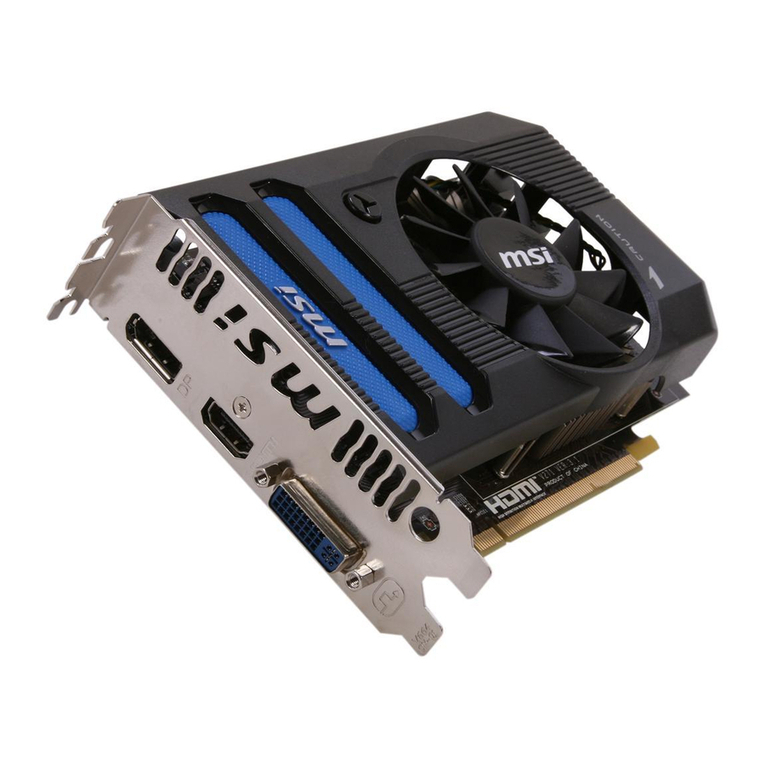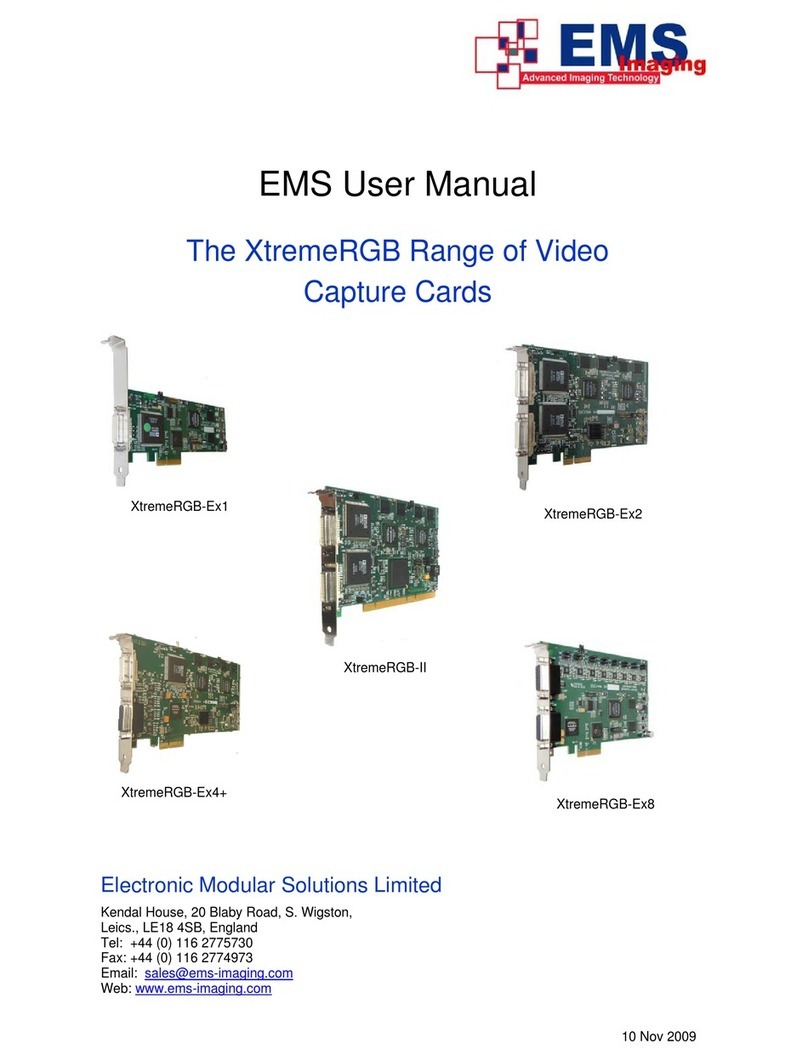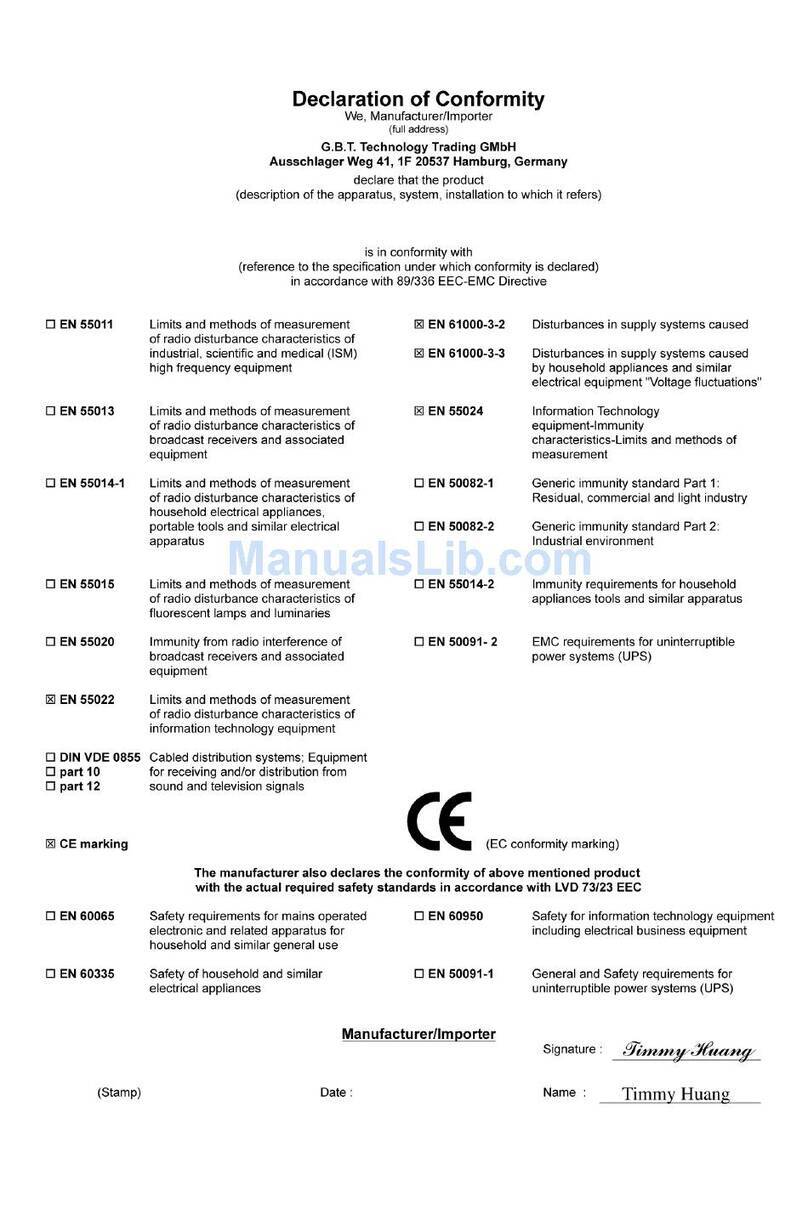
FIC Graphic Card User Manual
1-4
•Emboss, Dot Product 3 and Environment bump mapping
•Spherical, Dual-Paraboloid and Cubic environment mapping
•Fog effects, texture lighting, video textures, reflections, shadows,
spotlights, LOD biasing and texture
•Dual independent displays (DVI/CRT, DVI/TV, CRT/TV)
•Provides S-video and composite connect.
∗Provides DVI (Digital Visual Interface) output port(optional).
1.1 Performance
The card is a graphics accelerator. Computer functions like disk access
and numerical calculation are not accelerated by the card. Because
these operations also occur as Windows programs are running, the
overall speed will depend on the mix of graphics operations and the
other types of operations. It is not unusual to obtain an overall system
speed increase of 2 times after installing the card. The speed of pure
graphics operations, like dragging objects with a mouse, scrolling, and
resizing, will be remarkably improved.
1.2 Software Compatibility
The key function of the card is its VGA compatibility. Unlike
coprocessor-based, or IBM8514A-type display cards, the card is 100%
compatible with your DOS computer. This means that all DOS software
will run correctly with the VGAcard without modification.
The VGA compatibility includes backward compatibility with the EGA,
CGA and MDA standards. All DOS software will include drivers for at
least one of these display types and will be fully compatible with the
card. The card is also fully compatible with AGP BIOS extensions for
resolutions higher than 640 by 480.
When the card is used in VGA, backward compatibility, 16-color AGP
modes, or the graphics engine of the ATI RADEON 7500/8500 card is
